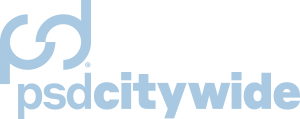Never have the largest Canadian cities faced so much uncertainty when it comes to future fiscal sustainability. Changing demographics, increasing income inequality, growing social service needs, deteriorating infrastructure, the impact of climate change, and federal immigration policies will push municipal expenditure needs well beyond anything experienced in the recent past. When this is combined with a revenue base that is largely controlled by provincial legislation and has remained virtually unchanged for decades (user fees and property taxes being the mainstay), concerns over financing services and fiscal sustainability are becoming major concern.
One remedy to remove this increasing gap and one that is gaining traction among some city officials and policy analysts, if not the public at large, is the importance of introducing legislation that would permit cities to expand their local tax base. Such action would bring Canadian cities in line with many large U.S. and European counterparts. Of course, new taxes at the local level would require provincial approval and possibly new legislation.
What About the Property Tax?
At the outset, it should be noted that arguments in favour of new taxes do not diminish the importance of the property tax. The property tax has been around for decades and will be around for many more. It is a good tax for municipal governments because it satisfies many characteristics of a fiscally sound local tax. Property is immovable so it cannot escape the tax; it is fair because its revenue is used to fund services that benefit residents in the local community; and revenues are stable and predictable. Nevertheless, it is relatively inelastic (does not grow automatically as the economy grows), highly visible and, therefore, politically contentious almost everywhere. Its high visibility leads to frequent opposition to increases in property tax rates meaning that spending on necessary services is always vulnerable to potentially harmful cutbacks and restrictions.
What is the Case for Diversifying Revenues?
It is often suggested that the property tax is buoyant enough to fund municipal services – local politicians just have to raise the tax rate. True as this is likely to be, the political reality is such that local councilors are reluctant to do so. The more important question, however, is not whether property taxes should be increased, but whether the property tax is the best tax for funding the growing range of tax-funded municipal services. In short, the answer is no. Arguments in support of additional taxes are strong. Access to a portfolio of taxes would provide cities with stability (through the property tax which they currently have) and elasticity (through one or more new taxes). This would permit local governments to cast a wider net in capturing revenues from those who benefit from municipal services – residents, commuters and visitors.
Some U.S. evidence (there have been no empirical studies on this in Canada) suggests that the cost of inner-city services used by people who live in the suburbs and commute to work (in the city center) exceeds, sometimes substantially, the taxes they pay for these services. Relying on a range of taxes permits city politicians to set a lower tax rate for any particular tax. Since the excess burden of a tax increases with its tax rate (i.e. the distortions increase as the tax rate increases), a more diversified system should yield a given amount of revenue more efficiently with a smaller negative impact on the overall tax base. Finally, access to new taxes would permit cities to reduce their dependence on property taxes. This would address a concern that is growing in importance; specifically, it would assist homeowners who are asset-rich (high property values) but income-poor and facing increasing difficulty in meeting their property tax liability.
Which New Tax or Taxes?
There are a number of possibilities but some taxes would be easier to implement and likely more politically acceptable, especially if the tax is on the user of the service with revenues earmarked for that service. Taxes of this sort achieve two objectives – one, its capacity to generate revenue, and two, its potential to change behavior so that local resources are not wasted or squandered.
For Funding Specific Services
In most large cities, roads and public transit absorb between twenty and thirty percent of all property tax revenue. This is a service whose funding or partial funding could be removed from the property tax base and replaced by taxes/charges on automobile users. An obvious possibility and one that is used in many U.S. cities is a municipal gas and diesel fuel tax. This offers a number of advantages, at least in the short run. It is benefits-based as long as revenues are earmarked for funding local roads and public transit. It can be an appropriate tool for internalizing the costs of greenhouse gas emissions (GHGs) because emissions increase as the amount of fuel burned increases. It can impact the cumulative or total distance driven, thus reducing unnecessary driving or engine idling. It provides an incentive for switching to more fuel-efficient cars and public transit. It can assist in reducing urban sprawl. In the long run, however, it is not likely to be as important because of the trend towards more fuel-efficient and hybrid vehicles as well as an increasing reliance on non-fuel vehicles such as electric cars; younger adults, especially those living in highly urbanized areas, who are driving less; and the growing number of retiring baby boomers who are driving less than when they were younger.
A better option for the long run, although not on the radar in the short run, should be some form of road pricing scheme (congestion charges, toll roads, for example) and/or dynamic parking fee structures that vary by time of day and demand for spaces. Efficiently set road prices offer a number of advantages. They are widely recognized as an effective travel demand management tool for reducing congestion, pollution, and other external costs of driving. They can influence all dimensions of travel choice: trip frequency, destination, travel mode, time of day or week, route, and so on. To the extent that traffic demand is managed, cost pressures on a city’s budget is lowered, because traffic-related costs are reduced and infrastructure demands lessened. Furthermore, if revenues are dedicated to public transit and roads, there is almost certain to be more public acceptance for funding the service than if it were funded from general revenues.
Current parking policies in virtually every city should be reformed. At the moment, they are designed to encourage driving. On-street parking in high-demand areas is often priced well below its scarcity value. As a consequence, drivers spend considerable time looking for a vacant spot. Excessive cruising leads to considerable traffic congestion, pollution, as well as inefficiencies and lost productivity. In the U.S., for example, it has been estimated that cruising for parking accounts for roughly 30 percent of traffic in some cities at certain times of day. Meanwhile, privately owned garage parking is overpriced because operators possess a degree of monopoly power due to their unique locations. Overpricing of garage parking contributes further to the stock of cars cruising for parking, thus increasing traffic-related costs.
Efficient parking levies/taxes could help reduce the volume of traffic, lead to less congestion, faster trips, fewer policing and traffic enforcement costs, and reduced demand for new and expanded roads and highways. It could also generate much-needed revenue for improving and expanding public transit. Indeed, it has been argued that underpriced parking does more to promote automobile use than a good transit system does to discourage it.
Arguments in support of additional taxes are strong. Access to a portfolio of taxes would provide cities with stability (through the property tax which they currently have) and elasticity (through one or more new taxes). This would permit local governments to cast a wider net in capturing revenues from those who benefit from municipal services – residents, commuters and visitors.
Another tax that could be implemented to assist in the funding of local roads and public transit is a motor vehicle registration fee. This was used in the City of Toronto from September 1, 2008 to January 1, 2011 but is not currently in use. Vehicle fees could be based on features such as age and engine size – older and larger vehicles generally contribute more to pollution – or emissions with low-emission vehicles charged less than high-emission vehicles. The location could also be a factor (cars in cities add more to pollution and to congestion) or axle weight (heavier vehicles do more damage to roads and require more costly roads to be built). The fees are relatively easy to administer and are generally perceived to be fair on the basis of benefits received.
For Funding General Services
Other taxes that are strong candidates for large cities include a municipal personal income tax and/or a municipal sales tax. They have the potential to generate significant sums of revenue and are preferred to property taxes as a funding source for local services that are primarily income redistributional in nature such as social housing and social services and for services that benefit visitors and commuters. As well, they are less regressive than the property tax in their impact on taxpayers.
A personal income tax can be residence-based or payroll-based. For a residence-based income tax, an additional line could be added to the provincial personal income tax form after the line on which taxpayers report their provincial income tax liability. All taxpayers with postal codes that are part of the taxing jurisdiction would be required to complete this line by multiplying their provincial income tax liability by a certain percentage (as determined by city council) and reporting the dollar value. The province could collect the revenue and remit it to the city.
For a tax on payrolls or earnings, each employer within the city would be required to apply a surtax (at a rate set by the city) to provincial income taxes deducted from all employees. This tax would not be on all income received by taxpayers, only on wage and salary income (hence its name). The tax would be paid by employees who live in the city as well as those who live outside the city but work in it. The revenue would be collected along with provincial income taxes and remitted to the city. One important advantage of a payroll tax is that it captures revenue from commuters who work in the city and use city services but live outside the city and might not otherwise contribute to the cost of the services. In neither case, however, is the tax applied to visitors.
As with an income tax, a municipal sales tax would permit cities to tax non-residents (commuters and visitors) who use local services. A piggybacked city sales tax similar to those levied in many cities in the United States might not be possible in Canadian provinces that have the harmonized sales tax (HST) or the goods and services tax (GST) because of the way in which current tax revenues are collected and remitted to provincial governments. It is, however, a distinct possibility in provinces that have their own provincial retail sales tax (Manitoba, Saskatchewan, and British Columbia). More recently, it has been argued that large cities and metropolitan areas in Canada could benefit from the substitution of a “business value tax” for the relatively high and discriminatory effective property tax rates currently levied on business properties. Moreover, it would complement the existing GST/HST and not compete with it. A tax of this sort is currently used by local governments in France, Japan, and Italy and could be introduced in Canada, but it could lead to higher initial administrative costs.
Critical Issues in New Taxes
For any new tax, however, there are three issues of critical importance. First, the locally elected council must be responsible for setting the local tax rate, just as they are responsible for setting the local property tax rate. This, the literature tells us, leads to greater accountability, enhanced transparency, and improved decision-making in the way in which municipalities spend their money.
Second, the tax should be piggybacked onto the provincial tax to minimize administration costs.
Third, new taxes should cover an area that is large enough to minimize cross-border impacts. For example, higher tax rates in one city could lead to jobs relocating to neighboring jurisdictions, people moving to a lower tax area, and people shopping in neighboring municipalities. The best way to minimize this problem, as the empirical literature has concluded, is to implement these taxes in large cities and large metropolitan and regional areas making it more unattractive and costly for individuals to initiate an activity intended to avoid the tax. These taxes are unlikely to be appropriate for small and medium-sized municipalities where residents and businesses can easily cross municipal borders to relocate, do their shopping or search for work. For these municipalities, they may have to stick with the traditional revenue tools plus some provincial grant assistance for fiscally distressed areas.
For a more detailed discussion see Harry Kitchen and Enid Slack, “More Tax Sources for Canada’s Largest Cities: Why, What, and How?” Published in the IMFG Papers on Municipal Finance and Governance Series, No. 27, June 2016, University of Toronto: available at http://munkschool.utoronto.ca/imfg/
HARRY KITCHEN is Professor Emeritus in the Economics Department at Trent University. Over the past twenty years, he has completed more than 100 articles, reports, studies, and books on issues relating to local government expenditures, finance, structure and governance in Canada. In addition, he has served as a consultant or advisor for a number of municipal and provincial governments in Canada, the federal government, some private sector institutions and he has worked on projects in Russia and China. In 2013, he was awarded a Queens Diamond Jubilee medal for policy analysis and research contributions to municipal finance, structure and governance in Canada



